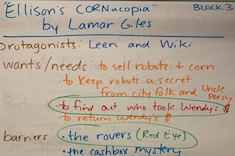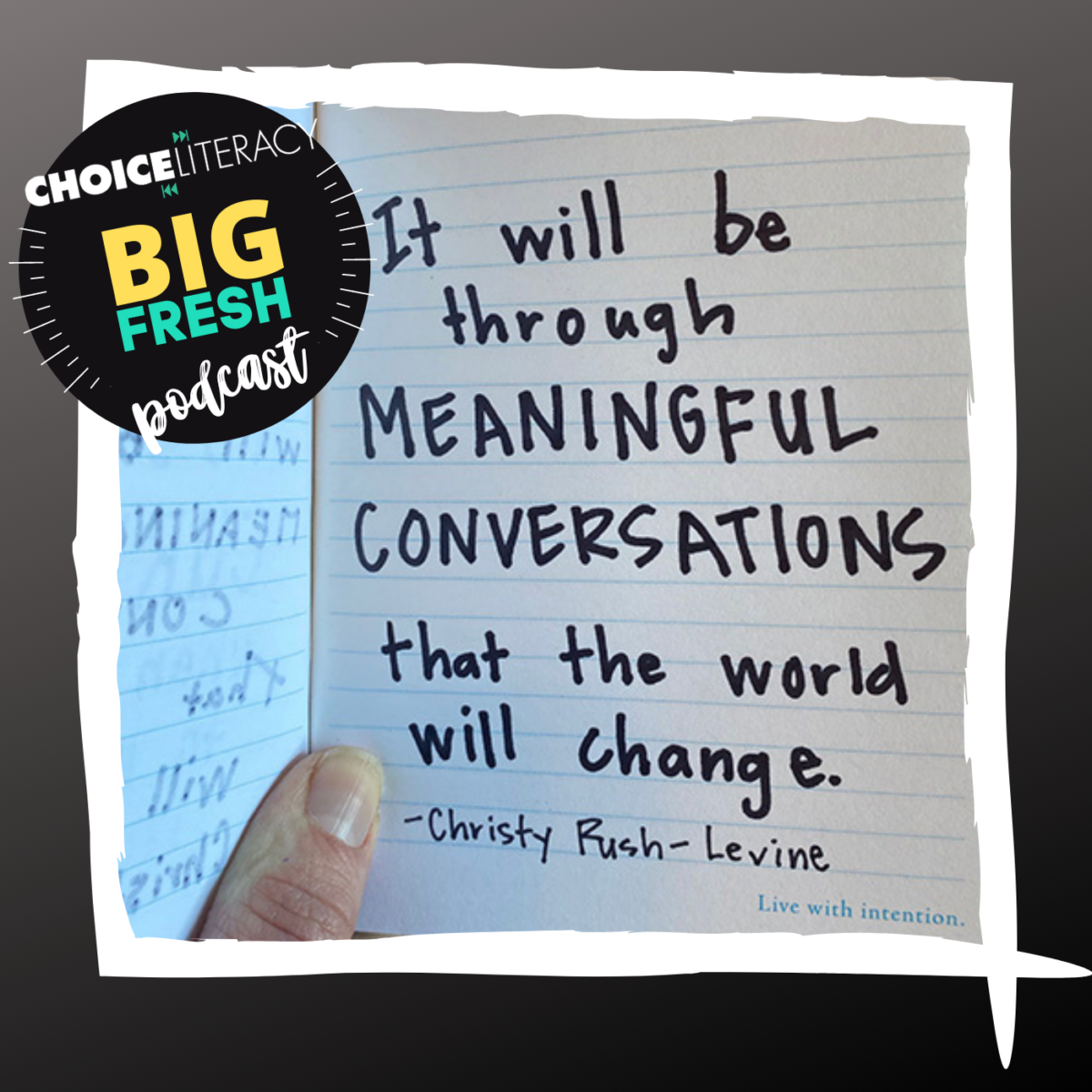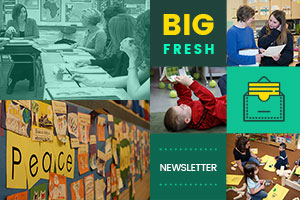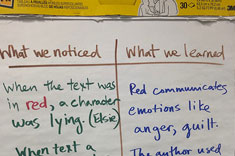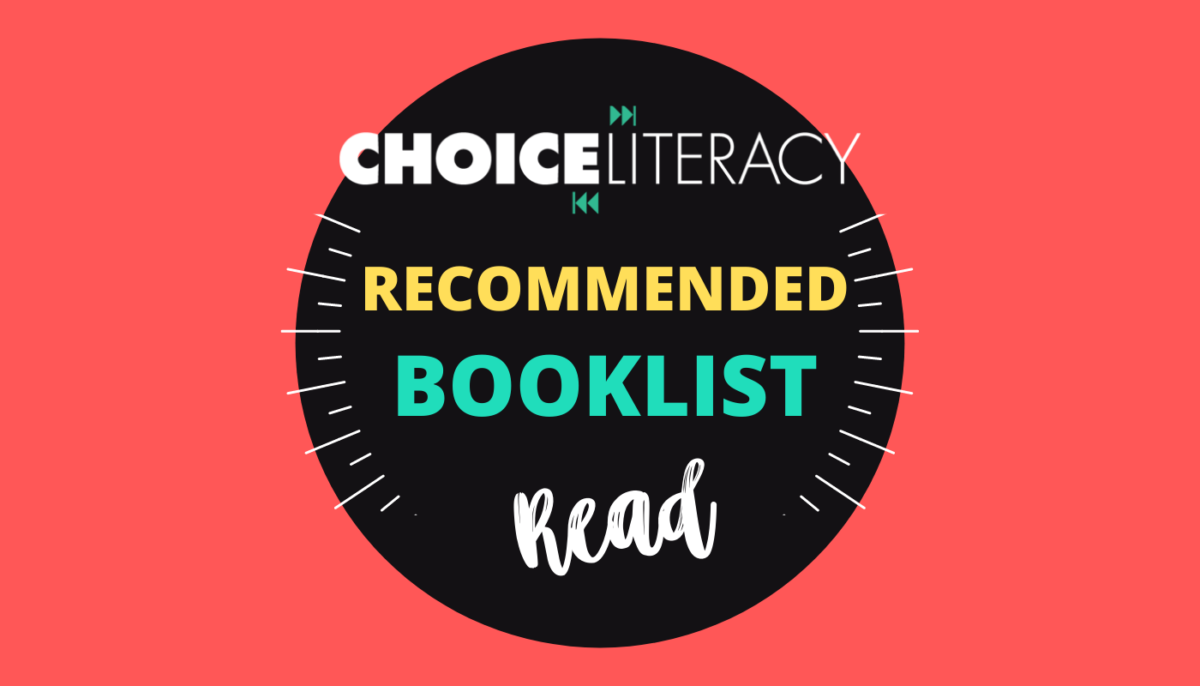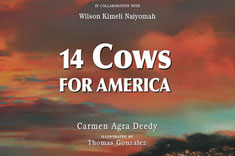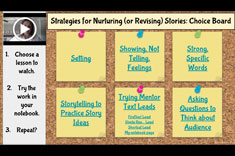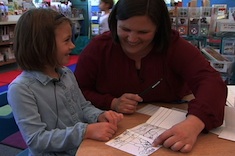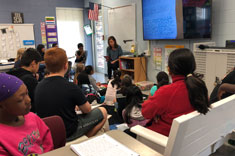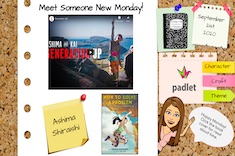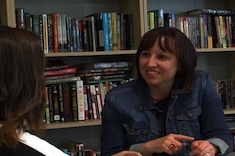Library
Choice Literacy Articles & Videos
The Choice Literacy library contains over 3,000 articles and 900 videos from 150+ contributors. Classic Classroom and Literacy Leadership subscribers have access to the entire library. Content is updated continuously, with five to six new features published each week.
Latest Content
Teaching Summary
Christy Rush-Levine faces the challenge of helping her students see summary writing not as drudgery, but as a way to build more sophisticated thinking around texts.
Meaningful Conversations Podcast with Christy Rush-Levine
Christy Rush-Levine discusses meaningful conversations on the podcast.
January 22, 2021: Meaningful Conversations
Meaningful conversations is the theme of this week’s newsletter.
Meaningful Conversations
Christy Rush-Levine wraps meaningful conversations about race into her curriculum instead of making it “one more thing” to squeeze into the school day.
One Text. One Conversation. Many Possibilities.
Matt Renwick explores ways in which whole-class conversations around one text can build a strong community as understanding is co-constructed.
January 15, 2021: Equity
Equity is the theme of this week’s newsletter.
Picture Books That Affirm and Celebrate Students’ Identities
Stella Villalba shares picture books to celebrate and affirm students’ identities.
Field Notes: 6 Ways to Respond Remotely to Build a Community of Writers
Ruth Ayres observes a writing workshop that is remote. She reflects on the ways students offer feedback and how their community of writers is established.
Three Small Moves to Make a More Inclusive Classroom
Leigh Anne Eck reflects on three small moves she made to create a more inclusive classroom.
Laying the Foundation for an Equitable Classroom
Gretchen Schroeder shares the building blocks she uses to define equity for herself and her students, as well as a practical way to put them into action in her rural high school classroom.
Empowering Choice Podcast with Nawal Qarooni Casiano
Nawal Qarooni Casiano shares how to empower choice in kids leading minilessons on the podcast.
January 8, 2021: Empowering Choice
Choice is the theme of this week’s newsletter.
Actively Recognizing Biases
Tara Barnett and Kate Mills reflect on the ways they actively recognize their own biases and help students recognize their own.
Choice Boards for Writing Workshop
Tara Barnett and Kate Mills give a step-by-step guide for creating choice boards in writing workshop.
December 18, 2020: Fresh Starts
Fresh starts is the theme of this week’s newsletter.
December 11, 2020: Digital Reading
Digital reading is the theme of this week’s newsletter.
Writing Work Plans
Brian Sepe empowers students to make their own plans during writing workshop.
December 4, 2020: Assessing Writers
Assessing writers is the theme of this week’s newsletter.
First-Grade Writing Conference: Beginnings, Middles, and Ends
In this first-grade writing conference, Katrina Edwards helps Brooklyn order and stretch out her writing with a beginning, middle, and end. She uses long pages and scissors as tools.
Extending Invitations in Workshop: Ways to Empower Student Choice
Dana Murphy suggests three ways to empower student choice in workshop and get more students to accept the invitations we offer.
Digital Reading Strategies
Mandy Robek reflects on her identity as a digital and print reader and offers strategies to support students reading digital texts.
Online Routines to Create Energetic Reading Communities
Melissa Quimby shares online routines to strengthen the class reading community.
Comparing Book and Television Adaptations in a Reading Conference
Christy Rush-Levine confers with Adriana over her response to Pretty Little Liars, considering differences between the television show and book.
Troubleshooting Difficulties When Writing a Big Idea in Memoir
Kate Mills and Tara Barnett pinpoint common difficulties in sixth-grade memoir. They share teaching points and student writing samples before and after revision.
Rotation of the Classroom Library
Inspired by a closet clean-out, Leigh Anne Eck considers the way a seasonal rotation is also good for classroom libraries.
Assessing Students Online: Small and Powerful Moves
Tammy Mulligan shares small and mighty moves when assessing students online.
Browse Content By
Type
Category
- Assessment Tools
- Big Fresh Archives
- Booklists
- Choice Numeracy
- Classroom Design
- Common Core
- Community Building
- Conferring
- Content Literacy
- Digital Literacy
- English Language Learners
- Equity
- Family Relations
- Free Samples
- Guiding Groups
- Leadership
- Literacy Coaches
- Mentor Texts
- Minilessons
- New Teacher Mentors
- Podcasts
- Poetry
- Quote Collections
- Reading Strategies
- Self Care
- Struggling and Striving Learners
- Talking and Listening
- Teacher Study Groups
- Teaching Reading
- Teaching Writing
- Word Study and Vocabulary
Author
- Melissa Quimby
- Nawal Qarooni
- Gwen Blumberg
- Julie Cox
- The Lead Learners
- Hannah Tills
- Josie Stewart
- Ruth Metcalfe
- Mallory Messenger
- Becca Burk
- Jodie Bailey
- Vivian Chen
- Mary Brower
- Tiffany Abbott Fuller
- Stephanie Affinito
- Ruth Ayres
- Leigh Anne Eck
- Heather Fisher
- Shari Frost
- Julie Johnson
- Suzy Kaback
- Gigi McAllister
- Shirl McPhillips
- Melanie Meehan
- Cathy Mere
- Debbie Miller
- Tara Barnett and Kate Mills
- Tammy Mulligan
- Dana Murphy
- Bitsy Parks
- David Pittman
- Brenda Power
- Heather Rader
- Matt Renwick
- Mandy Robek
- Christy Rush-Levine
- Gretchen Schroeder
- Jen Schwanke
- Brian Sepe
- Katherine Sokolowski
- Stella Villalba
- Jennifer Vincent
Grade Level
Choice Literacy Membership
Articles
Get full access to all Choice Literacy article content
Videos
Get full access to all Choice Literacy video content
Courses
Access Choice Literacy course curriculum and training

